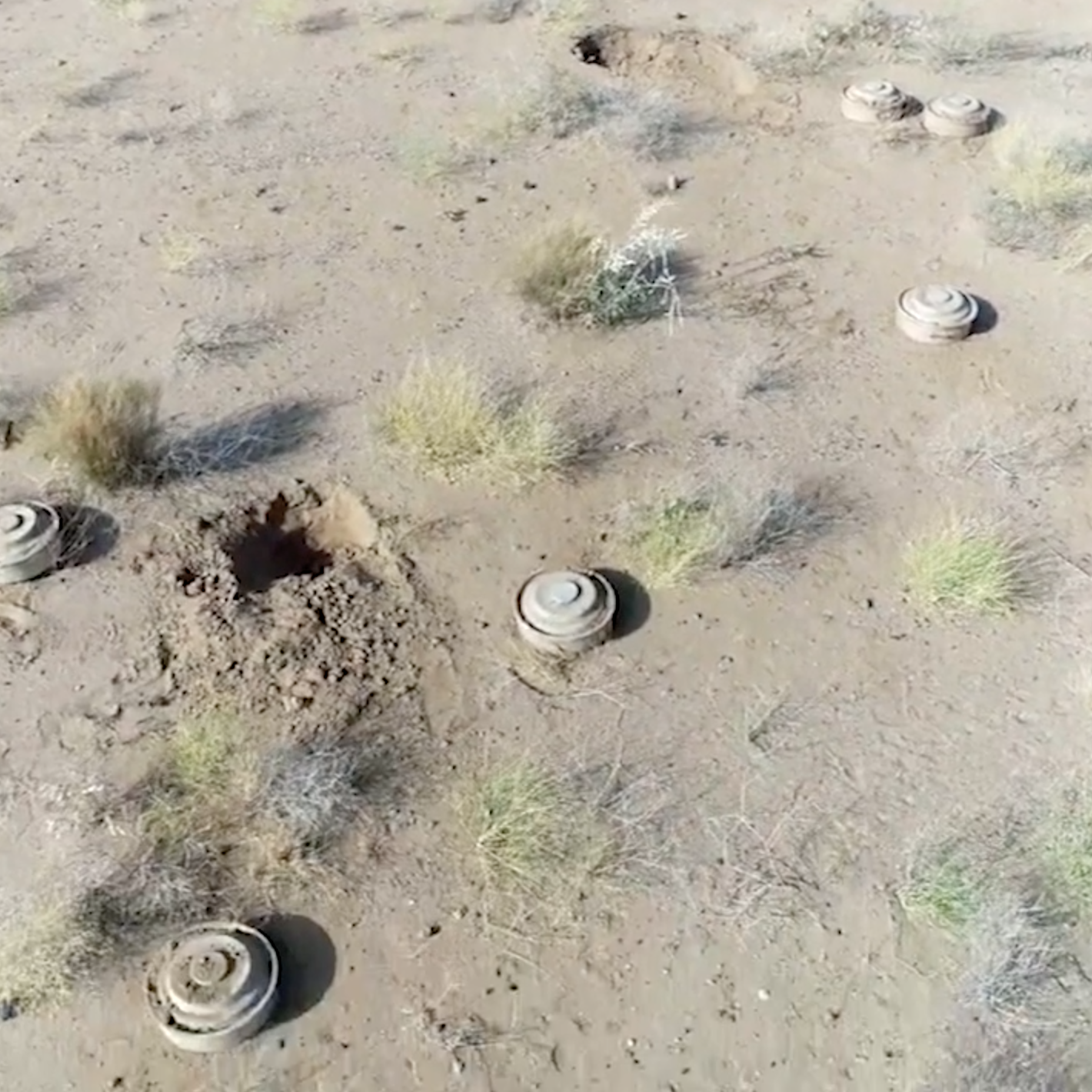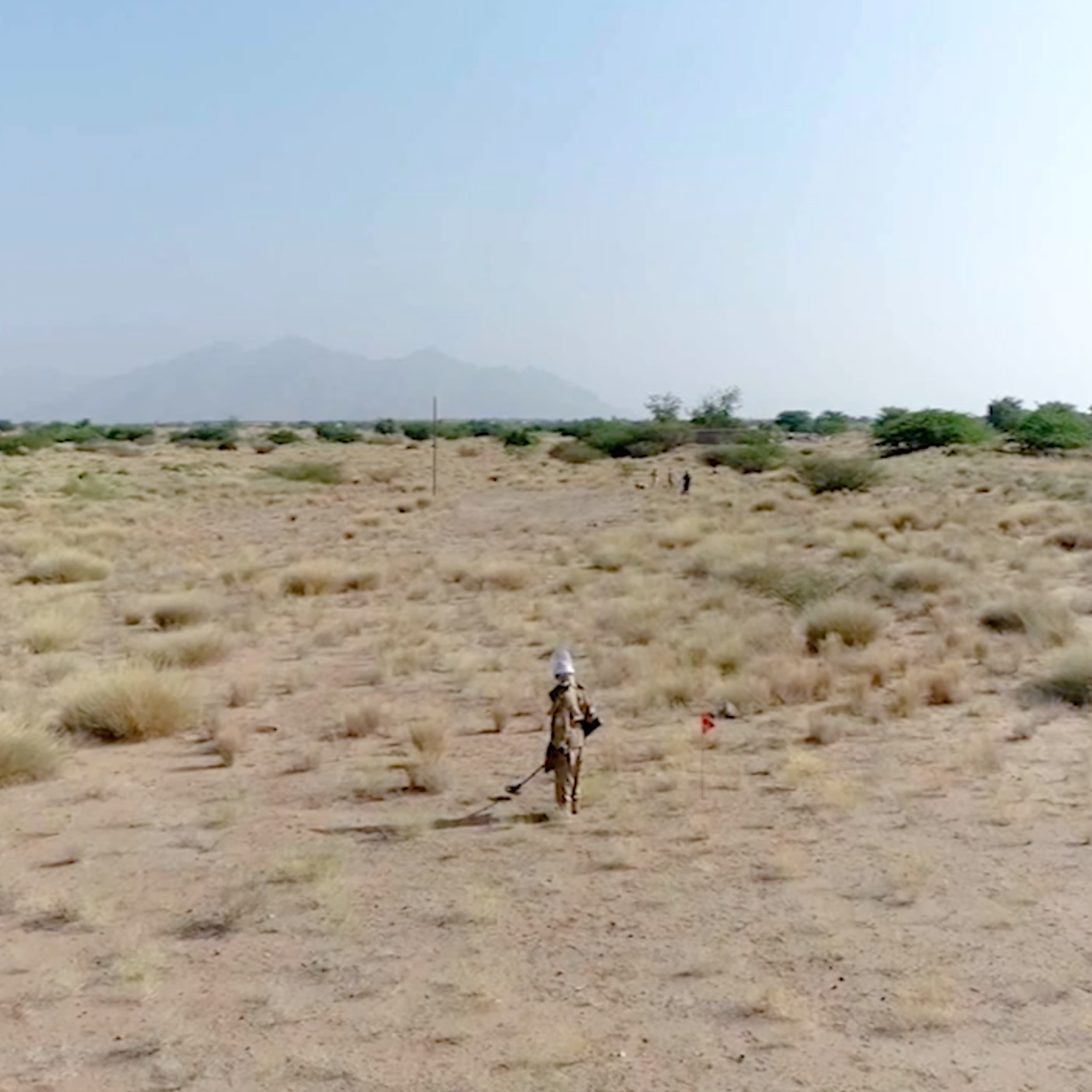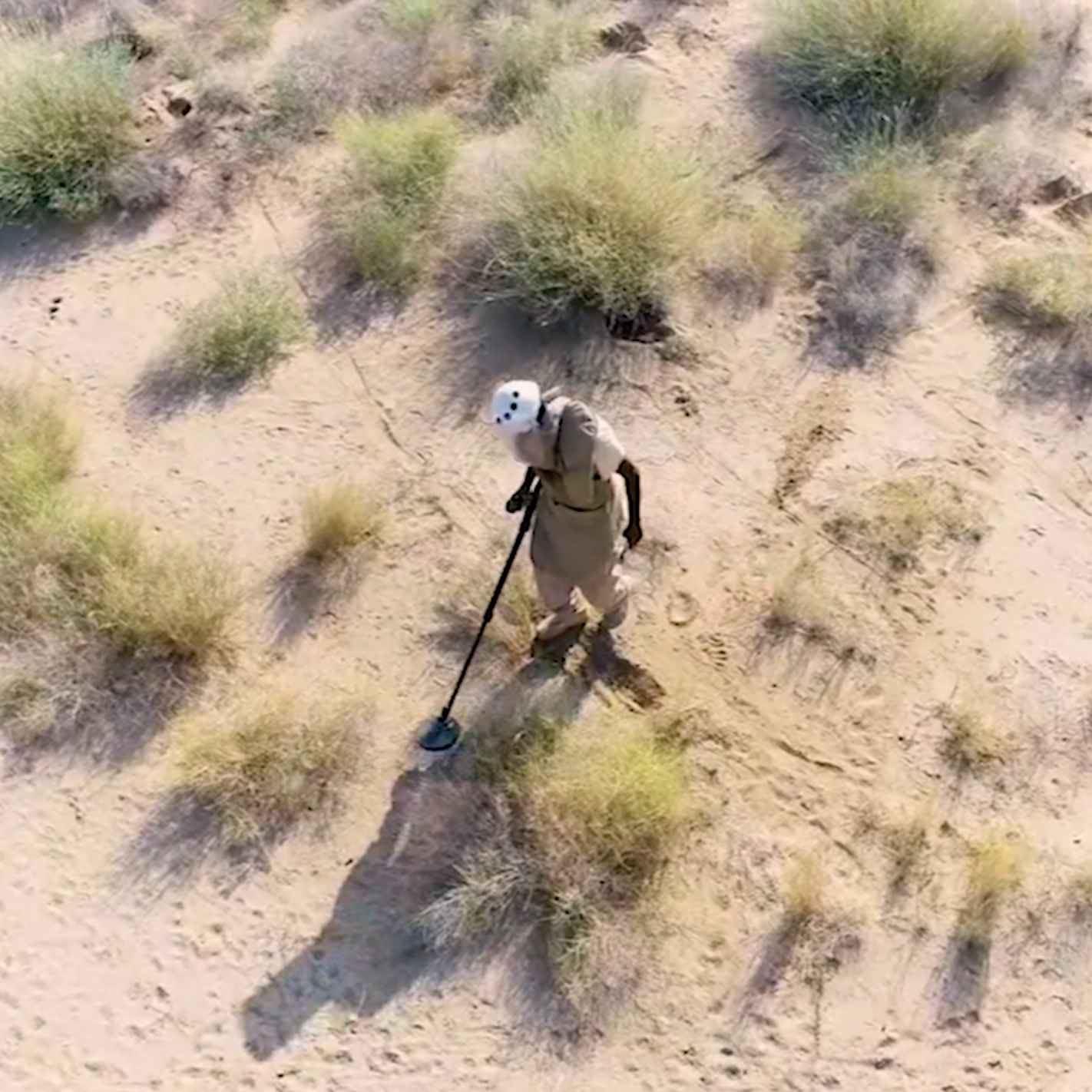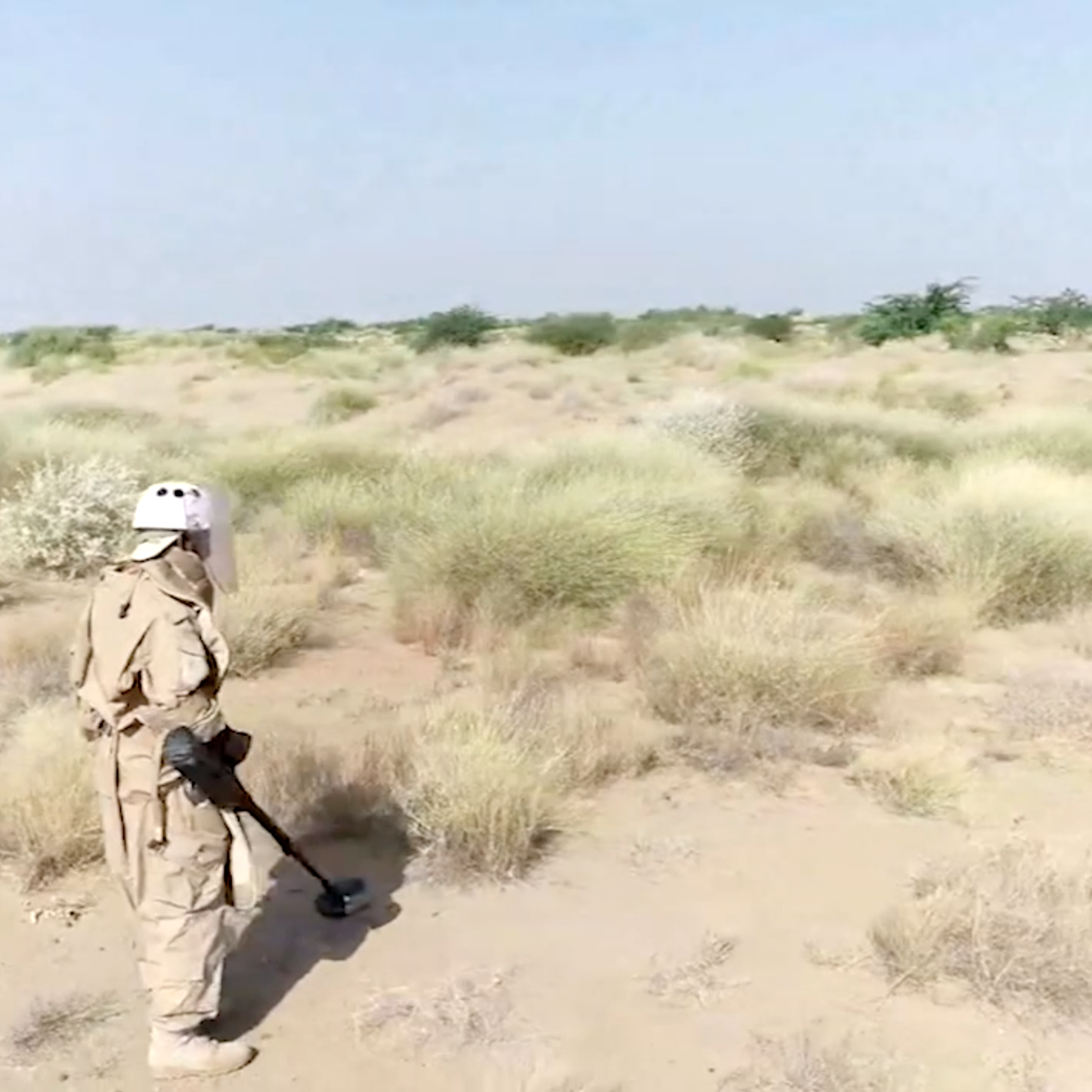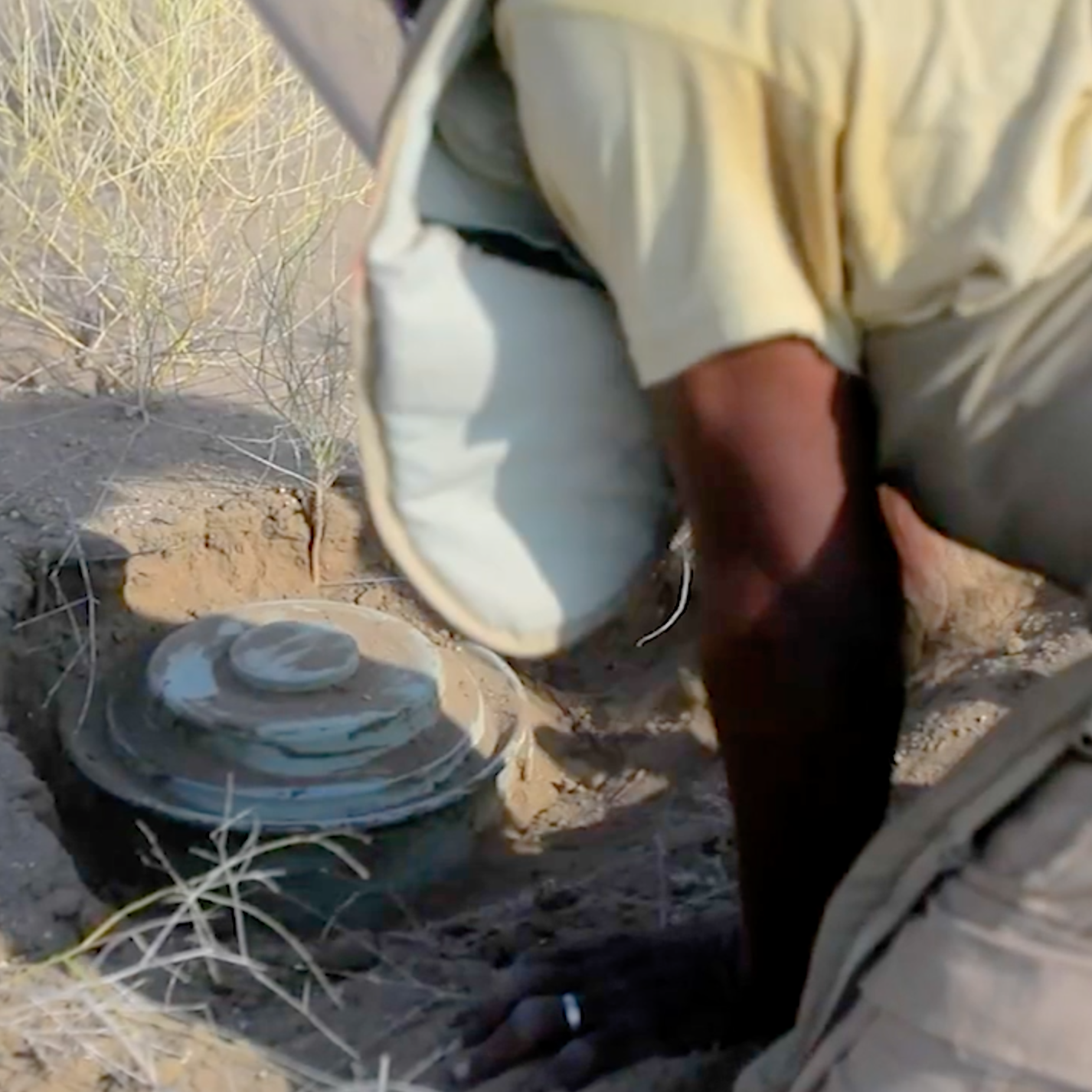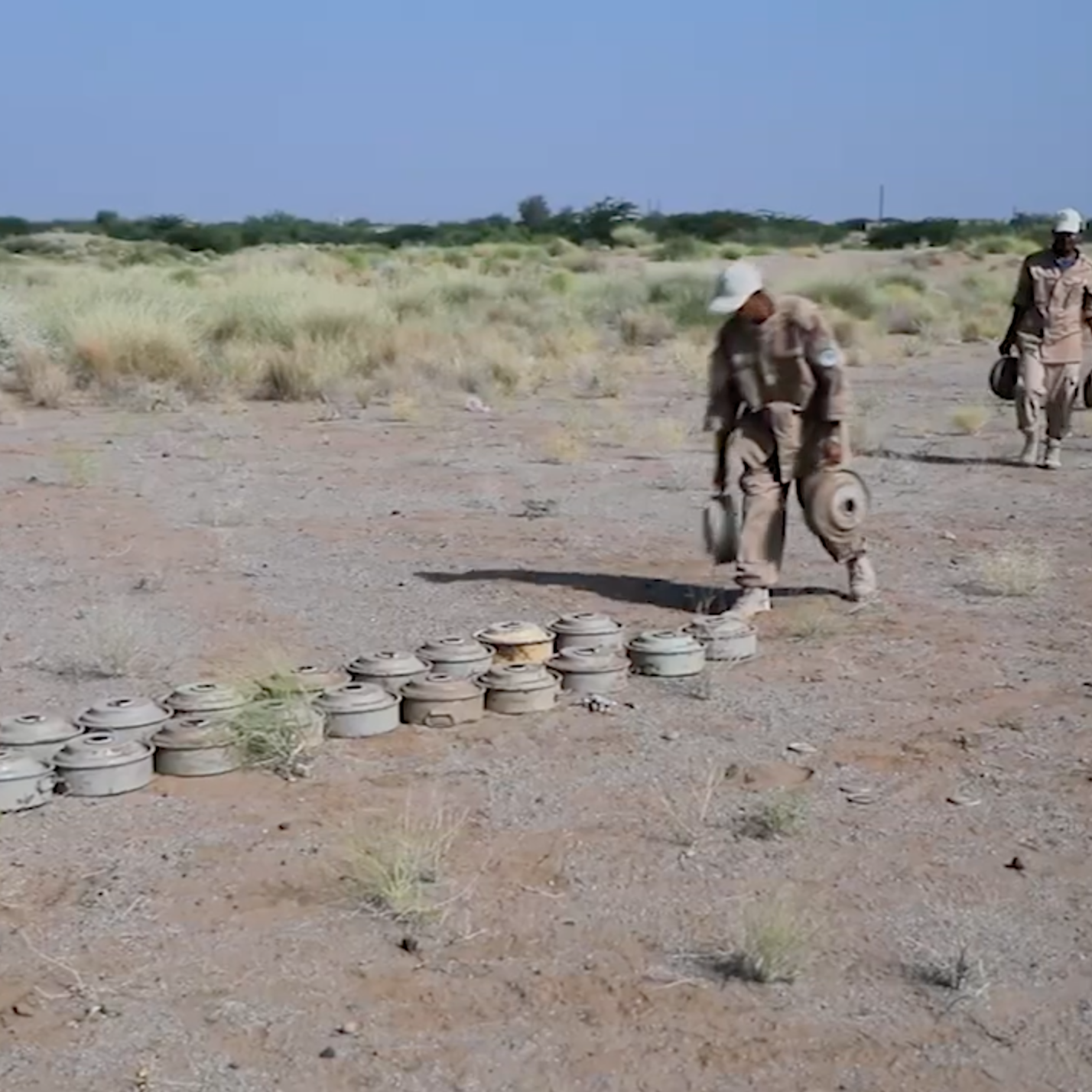
Civilians displaced by the conflict in western Yemen are returning home after liberation to find their houses and villages mined, Project Masam has warned.
In November this year, Yemen’s pro-government forces took full control of previously-held key areas in eastern Hays, in southern Hodeidah Governorate. The Hays District was initially liberated in 2018 but Hodeidah has been a strategic battleground of Yemen’s civil war.
Ahmed Ali Hassan Zuhair (pictured), a civilian from Hays District, asked to share his story.
“We have been displaced for more than four years, and now, after the region was liberated, we came to our village and found it all planted with mines, in farms, houses and roads,” he told Masam. “The farms, roads and houses are all planted with mines, and wherever you go you find mines.”
After villagers reported the presence of suspected landmines in the area, Masam dispatched demining teams to carry out survey and clearance.
“We thank Masam teams for their efforts in clearing mines – they are still clearing mines, as our village is full of mines,” Zuhair said.
Hays’ large mine contamination
Sami Saeed, Leader of Masam Team 26, explained that his team travelled to Beit Al-Aqd village, based on a civilian’s report stating that an anti-personnel mines had killed a civilian in the area. The victim was identified as 17-year-old Murad.
“Today, we started in this area, and there are several areas in the north-west of Hays that are contaminated with landmines, and there are many fields containing anti-tank mines, anti-personnel mines and explosive devices,” Saeed said. “We are now surveying this area, and there are several other areas [that need surveys] such as Al-Hamayniyah, Al-Mukabber, Beit Bish and other areas.”
“We are now opening corridors and roads and securing homes, as well as government facilities such as schools, health centers and water projects.”
The expert explained mine areas including Dhami and the suburbs of the Al-Khawkha Directorate in the south of Hays, as well as several areas contaminated with mines in the north-east of Hays, where four Masam teams (20, 7, 26 and 27) are currently operating.
High explosive devices
Team 26, for instance, was dispatched to Al-Nasr School in Beit Bish village, Hays Directorate, to extract 14 explosive devices from inside the school’s classrooms.
“These devices are considered high-explosive devices used to blow up buildings and bridges, and the Houthi group has used them to blow up schools, as well as water projects, health units, and bridges on main roads,” Saeed said. “We cleared these explosive devices, which were tied to a remote detonation cord, and we cleared all 14 devices from inside the classrooms. Also, 15 anti-tank mines were cleared from around the school. We cleared them safely.”
In the area of Sha’bat Bani Zuhair, Team 7 cleared a “very high” amount of landmines. Over 24 hours, the team cleared 152 landmines, according to the Team Leader.
The teams in Hays said they continue to work to open safe passages for civilians, secure their return, and facilitate the arrival of relief and shelter organisations to relieve the plight of affected civilians, who have been displaced by the conflict and the threat of landmines.


